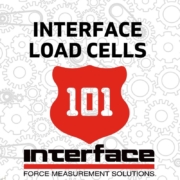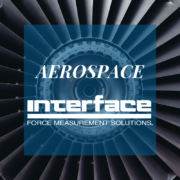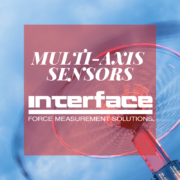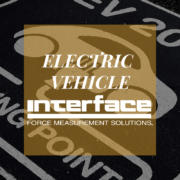Optimizing Medical Device Performance with Precise Force Measurement
 Precision is paramount in the world of medical devices. Accurate and reliable performance is crucial for patient safety and positive outcomes, from surgical robots to prosthetic limb designs. How do manufacturers ensure this level of accuracy? The answer lies in precise force measurement.
Precision is paramount in the world of medical devices. Accurate and reliable performance is crucial for patient safety and positive outcomes, from surgical robots to prosthetic limb designs. How do manufacturers ensure this level of accuracy? The answer lies in precise force measurement.
Our new case study, Advancing Medical Device Design, Testing, and Performance, details the industry challenges and Interface solutions.
Force measurement plays a critical role throughout the entire lifecycle of a medical device – from initial design and testing to ongoing performance monitoring. By understanding and applying the principles of force measurement, medical device companies can:
- Improve Device Functionality: Ensure devices operate safely and effectively.
- Meet Regulatory Standards: Generate reliable data from medical device compliance with stringent industry regulations.
- Enhance Patient Safety: Minimize risks associated with device failure.
- Drive Innovation: Develop cutting-edge medical technologies with confidence.
Interface Solutions Power Medical Device Advancement
Interface is a leading provider of force measurement solutions tailored specifically for the medical device industry. Our comprehensive range of products and services helps manufacturers overcome critical challenges and achieve optimal performance.
Here’s how Interface makes a difference:
- Miniature Load Cells: These small, high-accuracy sensors deliver detailed force measurement performance data without compromising design. They are ideal for equipment, implantable devices, and surgical tools where space is limited. Explore our Mini Load Cells.
- Multi-axis sensors: These advanced sensors simultaneously capture forces in multiple directions, which is crucial for complex medical equipment like surgical robots. Review our multi-axis selection guide.
- Torque Transducers: Precisely measure rotational forces in devices such as dental tools and orthopedic instruments. Learn more: Dental Handpiece Torque Check.
- Data Acquisition Systems: These instrumentation solutions enable real-time monitoring and analysis of force data, facilitating ongoing performance assessment and design refinement. The data must be easily captured, stored, and retrievable for research and development and regulatory requirements. Watch: Unlocking the Power of DAQ Webinar Recap
- Custom Solutions: Interface provides customized sensors at scale for several leading medical device manufacturers worldwide. Our expert engineering team works closely with our customers to develop tailored solutions that meet their unique specifications.
TIP: Learn more in our latest medical industry solutions case study: Advancing Medical Device Design, Testing, and Performance,
Medical Device Force Measurement Applications
4D Bioprinting
Interface load cells help researchers analyze material behavior during printing, optimizing biocompatible implants’ functionality. During medical R&D, load cells used in medical device prototypes can detect pressure or tension within the printed construct. 4D printing for bioprinting utilizes 3D printing techniques to create functional structures. Forces and stresses need to be measured during the printing process. Interface’s SuperSC S-Type Miniature Load Cell has a high force in a compact design and can easily record the forces of the printhead during the printing process. To record and analyze the load cell’s force data, utilize a data logger, such as Interface’s 9330 Battery Powered High-Speed Data Logging Indicator with a USB port and software. Measuring forces can provide valuable data on the material’s behavior during printing to identify swelling or degradation. Learn more.
Radiosurgery Robot
Radiosurgery is a medical procedure that uses targeted radiation to remove cancerous tumors or masses in the body. Radiosurgery robots, a medical device surgical tool, target these abnormalities and deliver radiation minimally invasively with high precision and accuracy. Load cells are needed to test and calibrate the robotic arm before it affects a patient. Interface’s 6A40A 6-Axis Load Cell can be installed at the joints of the radiosurgery robot. The force and torque exerted must be monitored to ensure each robotic joint can handle the precise movements and loads without failing. These results can be logged, displayed, and measured when connected to Interface’s BX8-HD44 BlueDAQ Series Data Acquisition System with included BlueDAQ software. Learn more.
Prosthetics Load and Fatigue Testing
Interface force measurement sensors provide valuable insights into prosthetic foot mechanics, enabling design improvements for enhanced mobility and comfort. Prosthetic limbs must be tested for extreme loading, which can occur during falls, accidents, and sports movements. Fatigue testing of prosthetic components determines their expected lifespan under normal usage. A static load test apparatus uses an SSMF Fatigue Rated S-type Load Cell attached to hydraulic actuators to apply and measure loads. A fatigue testing machine uses a miniature load cell to measure cyclic loads during force application. Engineers determine whether prosthetic materials and designs will withstand the rigors of daily use and occasional high-load situations.
Force measurement is an essential tool for medical device innovation. Researchers, engineers, designers, and manufacturers can leverage cutting-edge technology and expertise by partnering with Interface to develop safe, effective, life-changing medical devices.
As the healthcare industry continues to evolve, Interface remains committed to providing solutions that empower medical device companies to push the boundaries of possibility and improve patient care.
In the case study, learn more about Interface’s force measurement solutions for medical devices.
Advancing Medical Device Design, Testing, and Performance






